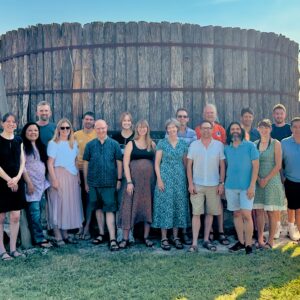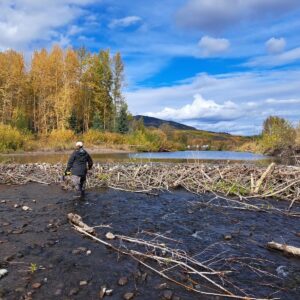
In support of salmon

The Tatalu (Little Campbell) River – which runs through A Rocha Canada’s Brooksdale Environmental Centre in BC – is home to five species of Pacific Salmon, including the Chinook Oncorhynchus tshawytscha and Coho Salmon Oncorhynchus kisutch. Boundary Bay Chinook Salmon, which include the Chinook that spawn in the Tatalu, are classified as threatened.
Chinook Salmon populations have declined in recent decades for a variety of reasons, including their susceptibility to drought and extreme warm temperatures. Coho Salmon also have their issues, witnessed in the Tatalu River. Every summer the river stops flowing in its middle reaches, becoming a string of isolated pools which gradually dry out entirely. This dry reach persists for around four months out of the year, even while the river is flowing both up and down-stream of it. It has profound implications for the surrounding wildlife, including thousands of Coho Salmon fry stranded in the pools. In autumn, the dry reach is an impassable barrier to spawning salmon, cutting them off from the upper half of the river. They must wait until the river reconnects, which can happen as late as November.
Since 2018, Brooksdale’s conservation science team has been walking the riverbed annually to record the timing and extent of the dry reach, and has been part of salmon fry rescue operations. They are also restoring important streamside vegetation that helps shade the river and keep it cool for the juvenile salmon. The vegetation also prevents erosion, which helps the river stay clear of fine sediment, which degrades spawning habitat.
And it’s making a difference! The team’s data and experience are helping raise awareness among community members and local governments to encourage protection of the river and remaining wetlands. Read more directly from the conservation science team.

